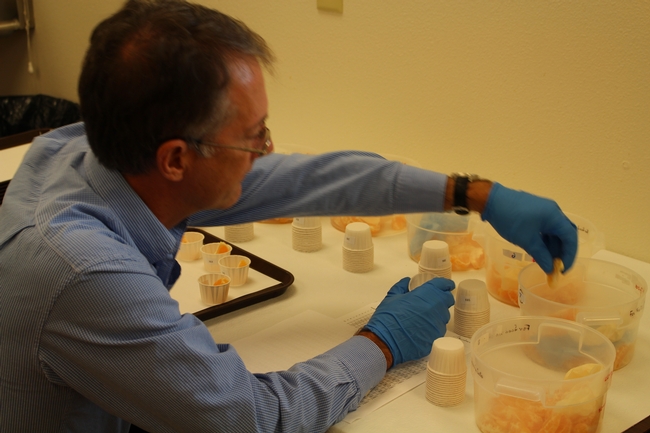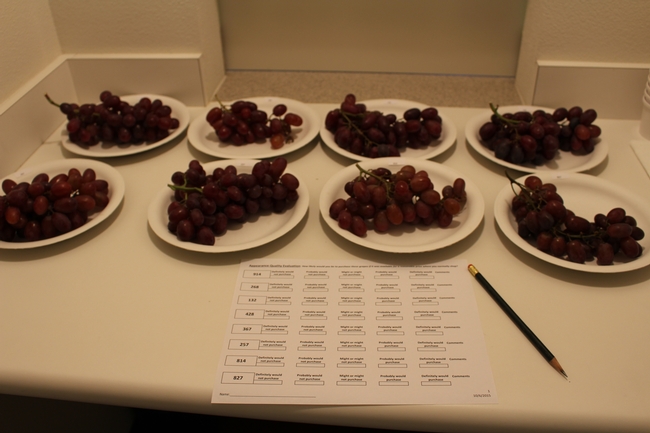The science of sensory evaluation
Your sense of taste, smell, sight, hearing and touch sends signals to your brain that the holiday feasting season has arrived. These basic senses are the tools that influence how much you like – or dislike – the foods you eat.
Sensory evaluation also has practical applications in agriculture. UC Agriculture and Natural Resources researchers and their colleagues often conduct sensory panels for specific food crop studies. Recently volunteer evaluators filed into the sensory evaluation lab at the UC Kearney Agricultural Research and Extension Center to participate in a grape sensory panel. UC researcher Mary Lu Arpaia and USDA researcher David Obenland collected data for a study on the impacts of various storage conditions on grape varieties.
Evaluators tasted grape samples and recorded their responses to appearance, taste and texture. Samples given to each evaluator were randomly ordered to eliminate bias in the test results. Evaluators were instructed to sip water between tastings to cleanse the palate. Evaluation procedures can vary slightly from product to product. When sensory panels are conducted for avocados, evaluators are instructed to munch on raw carrots before sipping water due to the oil in avocados. The coarse texture of carrots more fully cleanses the palate between avocado tastings. Other sensory panels have been conducted on citrus.
“There's a bit of psychology involved as well. How the product looks can influence your perception of how it tastes. To further eliminate bias, evaluators are intentionally isolated in individual stations so as not to be influenced by their neighbors' reactions,” explained David Obenland.
Sensory evaluation is used by commodity groups like the Table Grape Commission too. Data collected from a grape sensory panel provides important feedback to growers to identify factors that will inform marketing strategies and produce a quality product that consumers are more likely to buy. Evaluators can be recruited from industry groups, in which case they are considered to be “semi-experts,” or from the general public which are classified as “true consumers.”
The sensory evaluation lab at the Kearney Agricultural REC reflects the current philosophy of fruit commodity research that the industry's focus should be on sensory evaluation, from new pest management to horticultural practices to varietal improvements. The lab was completed and dedicated in April 2008 with support from the California Avocado Inspection Committee, Citrus Research Board, Food Machinery Corporation, Peach, Plum and Nectarine Growers of California, Sunkist and Table Grape Commission.
Author: Roberta Barton




